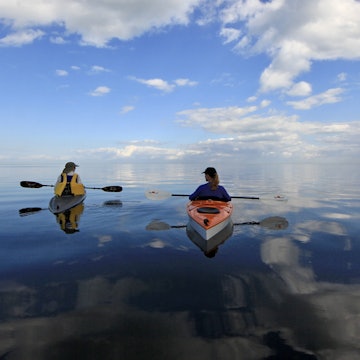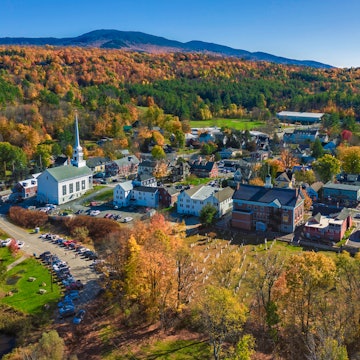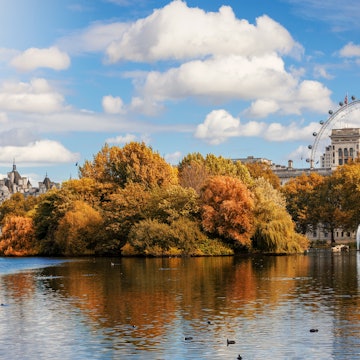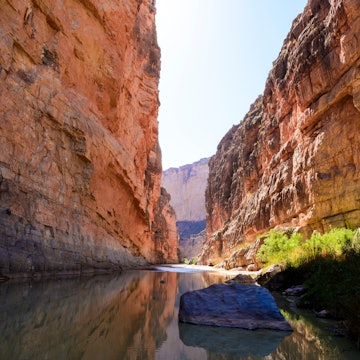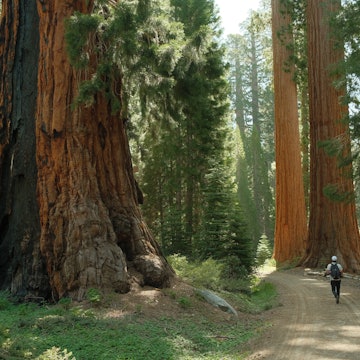

Alaska's national parks are vast and pristine – with Denali being the superstar of the bunch © sunsinger / Shutterstock
With vast wilderness making up most of the state, Alaska’s parks and outdoor spaces take center stage for most visitors. Alaska is home to about 60% of the total national park land in the US, covering 56 million acres.
Of the eight Alaska national parks, only a few are accessible by car and even then a visitor won’t be able to see the entire swath of parkland or coastline in a single visit. But it’s this grand scale that makes for uncrowded experiences full of opportunities to witness the rugged landscapes and wildlife for which Alaska is famous.
Denali National Park & Preserve
Best park for year-round access
Located along the George Parks Highway between Anchorage and Fairbanks, Denali National Park & Preserve is the crown jewel of Alaska’s national park system, mostly due to the presence of its namesake mountain, Denali, the High One. Easily reached by car (120 miles south of Fairbanks and 235 miles north of Anchorage) or via the Alaska Railroad, Denali National Park operates from a main entrance hub, where visitors hop on buses to access key activities and attractions.
Denali has one ribbon of road traversing a sliver of its six million acres, and private vehicles are restricted beyond Mile 15. What that offers for recreationalists and wildlife watchers is unobstructed access to view the ‘Big Five’ animals of Interior Alaska: moose, bears, wolves, caribou and Dall sheep.
In winter, Denali National Park is quiet but no less interesting. Nordic skiers, snowshoers and fat bike enthusiasts will relish the chance to travel the Park Road and surrounding trails as far as they wish, as it is closed during the winter to vehicle traffic.
Visiting Denali National Park & Preserve
Reserve campsites early for the upcoming summer.
Bus tours are a great way to learn about the history and natural features of the park. Visitors to the park can join the free bus tours at the depot by the visitor's center. Check in at the visitor's center for a complete bus schedule.
There is currently no access beyond Mile 46 of the Park Road due to a landslide – it is not expected to reopen until 2027.

Gates of the Arctic National Park & Preserve
Best park for experienced adrenaline junkies
Environmental challenges of the Arctic have topped headlines in recent years. As a result, Gates of the Arctic National Park is welcoming adventurous visitors who understand the challenges and joys of exploring this roadless, remote piece of Alaska. At 8.4 million acres, this is a park to be traveled with great respect for its harsh but beautiful environment where wild rivers snake through a tundra-laden landscape.
There are no established campgrounds in Gates of the Arctic, but there are many guide outfits that take pride in navigating this rugged slice of Alaska. Most people travel from Fairbanks via small plane, reaching one of the smaller communities above the Arctic Circle and journeying out into the tundra from there.
Visiting Gates of the Arctic National Park & Preserve
Plan for weather extremes and mosquitos. There is a small window between late June and late August when the weather is less dicey, but its never fully tame. For the mosquitos you'll need head nets and probably full body suits depending on how much they 'bug' you. DEET is the only repellent that works, but even then they suck.
Make a plan before you venture out into the untouched wilderness. Know your itinerary and tell someone at home when to expect to hear from you. Better yet. Book a guide.
Consider a guide outfit that can provide expertise, gear and food. My favorite choice is Alaska Alpine Guides.
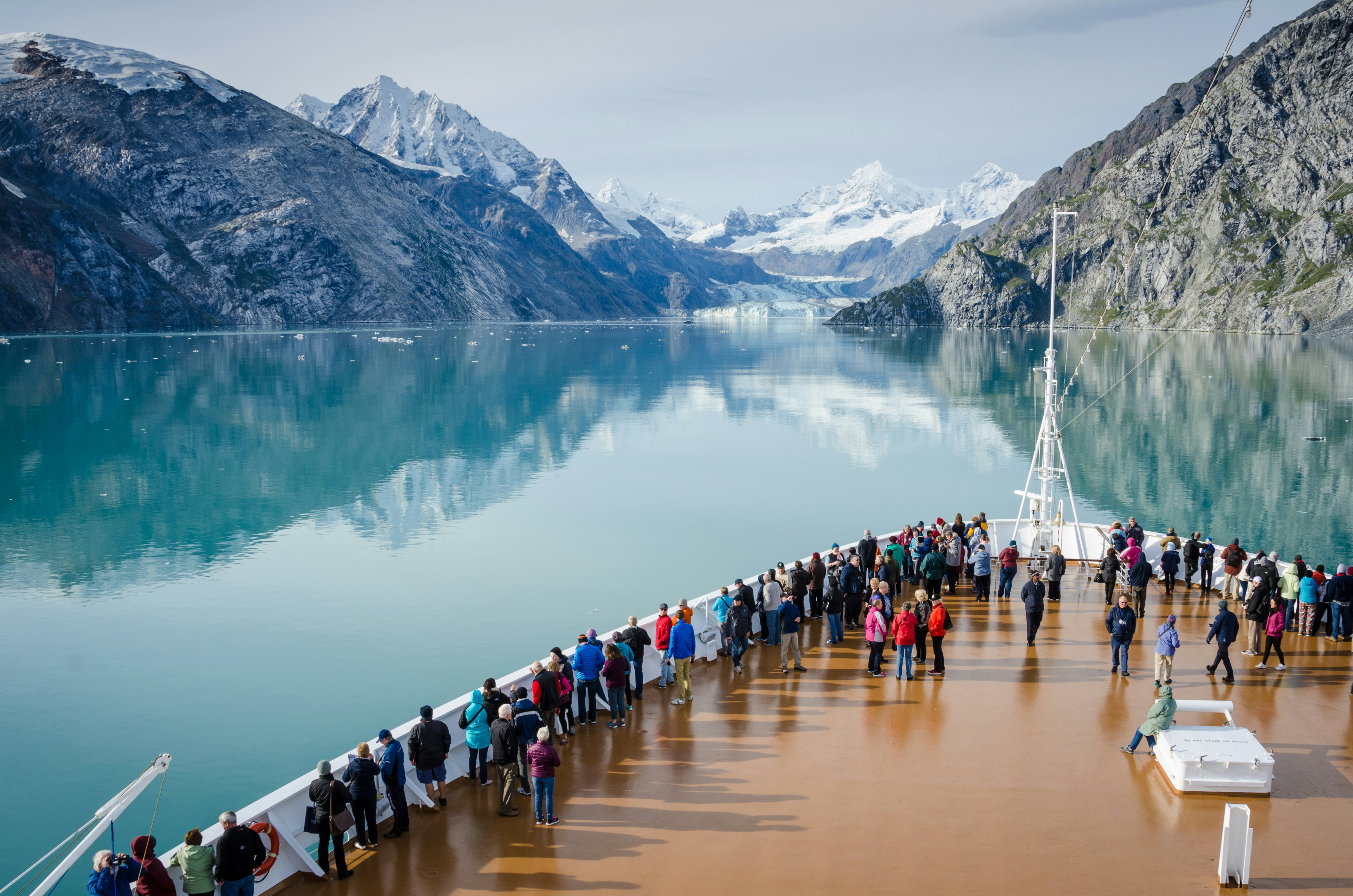
Glacier Bay National Park & Preserve
Best park for cruise ship visitors
Nearly every major cruise line sails to Glacier Bay’s icy fjords each summer, but it's also a valuable ecosystem for tracking climate change and an excellent place to paddle a kayak or take a hike with a bit of advance planning. There are 3.3 million acres of rugged coastline, mountains and glaciers, so the park’s headquarters and visitor center in Bartlett Cove are where all independent travelers should check in before beginning their explorations. With a lodge, restaurant, small interpretive center and trails, the story of Glacier Bay can be better understood here.
Those wanting to hike should depart from Bartlett Cove, choosing the Forest Trail, Tlingit Trail, Shoreline Trail, Bartlett River Trail or Bartlett Lake Trail. Pick up a map at the visitor center.
Kayaking around the park’s watery nooks and crannies is a wonderful way to get up close to the geologic wonders of Glacier Bay. Kayaks may be rented in Bartlett Cove or nearby Gustavus, and advance reservations are highly recommended during the busy summer season. There are also local outfitters that can guide paddlers on a remote overnight kayaking adventure as well, truly allowing for some intimate Glacier Bay experiences.
Visiting Glacier Bay National Park & Preserve
You cannot drive to Glacier Bay National Park & Preserve. Day tours from Juneau are available, or take a small plane (also from Juneau) to Gustavus. Alaska Seaplanes is the main commuter airline out of Juenau
Larger cruise lines do not stop in Bartlett Cove, choosing instead to sail up into the fjords and out again in a few hours. Smaller adventure cruises may stop in Bartlett Cove for a few hours, so check your itinerary. You can book a day trip through the National Park.
Be prepared for rain and wind at any time by packing waterproof layers and shoes.

Katmai National Park & Preserve
Best park for bear viewing
Katmai is the place to find Alaska's enormous coastal brown bears fishing for salmon from June to September. Access is by small plane only, and it's a backcountry experience with few luxuries available.
The annual spawn of Alaska’s salmon and subsequent rush of coastal brown bears to the rivers and streams of Katmai National Park & Preserve is something to see, but advance planning is a must. Visitor day and multi-day permits are dispensed each summer for opportunities to view bears fishing at Brooks Falls, Hallo Bay and other areas, and the Park Service demands strict adherence to the rules of behavior around bears. Most people arrive via small plane, but there is a commercial air service to King Salmon with a boat ride up the Naknek River to Brooks Camp.
Fishing is also exceptional at Brooks Camp and Falls, but have a license and be sure to enlist the services of a professional guide for safety’s sake.
Visiting Katmai National Park & Preserve
Park headquarters are located in King Salmon, and first-time visitors should consider starting and ending their adventure here for the greatest capture of information and safety considerations.
Brooks Camp lodge and campground require advance reservations, beginning in January of the year of travel. All visitors will be required to take a bear safety class upon arrival and adhere to bear-aware practices at all times.
Katmai may be popular with bear watchers and fishers coming from remote lodges, but overnight visitors need to be aware of the sparse availability of any assistance with food, water, and self-care. Outdoor enthusiasts with experience camping among bears, purifying water, and packing tents, sleeping pads, and other necessities in all kinds of weather conditions will relish the experience. Bring a BRC (Bear Resistant Container), bear spray, warm waterproof clothing, hiking boots, and shelter. A satellite phone (you can rent one at many electronic or phone stores) or spot device is not a bad idea, either.

Kenai Fjords National Park
Best park to view marine wildlife and glaciers
If it’s whales and other wildlife you seek, Kenai Fjords National Park is one of the best. Located just outside the fishing town of Seward, 126 miles south of Anchorage, this park is filled with cruise ship visitors between April and October, but there are still plenty of ways to beat the crowds in this 600,000-acre swath of southcentral Alaska wilderness.
Whale-watching and glacier cruises are by far the most popular activities, and several companies operate with more intimate adventures that share the same wonderful wildlife and ice views but aboard smaller vessels that often also carry kayaks. For a real adventure, consider renting a cabin or camping on a secluded beach and exploring the rugged coastlines of the park.
Exit Glacier is the only section of the park accessible by road, and is a must-see if for no other reason than to witness in person the effects of a warming planet. Hike sections of the 8.2-mile Harding Icefield Trail from the Exit Glacier Visitor Center for an impressive 1000 feet of elevation with every mile on this all-day trek. Additionally, a short and accessible interpretive nature trail leads from the visitor center for a look at Exit Glacier’s retreat over the last century, and is well worth the walk.
Visiting Kenai Fjords National Park
Have only one day? Take a glacier and wildlife cruise into the park (often with a ranger on board) then, if there’s time, drive to Exit Glacier for a stop at the visitor center.
The Alaska Railroad offers service from Anchorage to Seward, timing arrivals and departures around day cruises.
While hiking, be bear aware and stay on established trails to avoid damaging the fragile alpine ecosystems.
Trains, planes and bikes our best tips for getting around in Alaska.

Kobuk Valley National Park
Best park to check off a unique bucket list item
Only the hardiest explorers need apply for this rugged, remote national park adventure. Located near the Arctic community of Kotzebue, Kobuk Valley is a unique dune environment set in the middle of the northern tundra, and an anomaly among Alaska landscapes. Additionally, viewing the twice-yearly caribou migration (spring and fall) across these dunes is considered a privilege, with hundreds of thousands crossing the Kobuk’s valleys.
Kobuk Valley National Park is very remote. There are no roads to provide access, so planes take care of most transportation needs. Commercial airlines provide service from Anchorage to Kotzebue or from Fairbanks to Bettles. Once in Kotzebue or Bettles, you must fly to the park with authorized air taxis. From Kotzebue, smaller commercial airlines provide regularly scheduled flights to villages near the park.
Visiting Kobuk Valley National Park
Do not travel to this park without visiting a Public Lands Information Center in Anchorage or Fairbanks so you have the most up-to-date information.
Floating the Kobuk River is an excellent way to see the park. Guide services are available that provide everything from rafts to food and shelter.
Make time to visit the Great Kobuk Sand Dunes, one of the most iconic sights in the park and part of a 30-square-mile patchwork of gritty earth.

Lake Clark National Park & Preserve
Best park for remote camping and fishing
Home to one of the world’s most pristine salmon fisheries, just 120 air miles from Anchorage, Lake Clark National Park is headquartered at tiny Port Alsworth, where visitors may access bear viewing, fishing, camping or paddling on the pristine lakes inside the park. Many people also visit the park to see the cabin of Richard Proenneke, who built his cabin along the shore of Upper Twin Lake during the summers of 1967 and 1968 using mostly local materials and simple hand-held tools.
Nearly all visitors arrive between July and September. Small air carriers depart from Anchorage daily, and gear outfitters are available in Port Alsworth for those wishing to camp, kayak or canoe lakes and rivers of the park, staying in established campsites or the two public-use cabins. There are also several small lodges and overnight accommodations available in the communities around the park, and it is worth noting that reservations, made as early as possible, are an absolute must.
Visiting Lake Clark National Park & Preserve
Flights are aboard small aircraft that carry limited capacity for gear. You'll be given a specific weight by the air carrier. Each are different depending on the weight of each passenger, their gear and the aircraft they are operating. Air carriers always say how much you can bring, so read the fine print.
Try bear viewing at Chinitna Bay, Crescent Lake or Silver Salmon Creek.
Fishing is excellent along the park’s many lakes and rivers, especially Crescent Lake and Silver Salmon Creek, where anglers may hook a salmon, grayling or trout.

Wrangell-St. Elias National Park & Preserve
Best park to explore Alaska’s mining history
Wrangell-St. Elias is the nation's largest national park, with 13.2 million acres of land primed for climbing, hiking, camping, fishing and other active pursuits. It's also home to Kennecott Mines National Historic Landmark, a restored copper mine and company town near the village of McCarthy and the toe of the Root Glacier.
Most visitors to Wrangell-St. Elias arrive via the Edgerton Highway/McCarthy Road, a 60-mile gravel roadway that follows the general route of the now-defunct Copper River Northwestern Railway that used to haul copper from Kennecott Mine to the city of Cordova. The resulting renovations now provide stunning evidence of the town’s viability and success so far from “modern civilization.”
Wrangell-St. Elias is considered a remote outdoor recreation paradise, with opportunities to hike, climb and camp in many different units within the park. Consider utilizing a guide service to maximize your time spent in the park and experiencing its many opportunities like river rafting, glacier trekking or climbing, and undeveloped camping.
Visiting Wrangell-St. Elias National Park & Preserve
Driving from Anchorage takes at least eight hours. Driving from Valdez takes five hours.
Many people choose to drive to Glennallen or Chitina and fly to the town of McCarthy, 5 miles from Kennecott Mines National Historic Landmark.
Allow at least three nights in Kennecott Mines National Historic Landmark to fully experience the townsite, nearby glaciers and trails.
Keep planning your trip to Alaska:
Tips on how to make the most of your budget
14 things the Alaskan locals want you to know
Here are our favorite times of the year to explore stunning Alaska








